VOJ satellite broadband testing #2, the install +
Visions of Johanna is now on the coast of Ecuador, the vast Pacific beckoning. As discussed recently, Gram Schweikert has set the sloop up to test and compare the new compact satellite voice/Internet systems from Iridium and KVH/Inmarsat. Above he’s geek goofing with the KVH IP Phone and a Uniden waterproof portable which
can access four lines — Skype, cell, Inmarsat FB150, and Iridium OpenPort. But he’s sure been doing his homework. What follows is the longest Panbo entry ever, in which the good Gram details the hardware, the installation, the costs, first impressions of performance, and plans for future testing…
Hardware:
The Iridium OpenPort and KVH Fleet Broadband 150 hardware packages are quite similar, consisting of an antenna dome, connecting via a single cable (carrying power and signal) to a BDU (Below Deck Unit). The BDU has connections for power, antenna, Ethernet LAN, and an analog POTS (Plain Old Telephone System) telephone jack.
The Iridium OpenPort antenna is a 22″ diameter by 9″ tall solid state unit which connects via a heavy duty, shielded Ethernet cable (50m supplied) with a waterproof connector on the antenna end wired via a grounded Ethernet jack to the BDU. There is also one LAN (Ethernet) port and 3 telephone lines as the system supports multiple lines and simultaneous calls. Power and ground connect under a service cover via screw terminals.
The KVH FB150 antenna (seen above) is packaged within a 13.5″ diameter by 13″ tall stabilized antenna that is also available in a larger dome to match a TracVision TV system if desired. It attaches via a RG223 (.213″ diameter) double shielded coaxial cable (35′ supplied) with TNC connectors on both ends. The BDU connects to power and an optional remote power switch via a specialized cable that looks a bit like a monitor or serial cable jack, but has two larger pins for the power. It also has one telephone jack and two LAN ports, both with POE (Power Over Ethernet) to allow use with the included IP Telephone Handset.
Installation:
Both OpenPort by Iridium and the KVH Fleet Broadband 150 have similar requirements for antenna placement including a clear view of the sky and separation from radar. For most sailboats, this restricts options for antenna mount locations to the spreaders. Luckily, we were already pulling the rig for inspection and a lower end paint job last spring, so it was fairly easy at that time to add port and starboard spreader mounts. I also ran the two sat com cables and a new masthead AIS antenna cable with the rig down.
Finally, I decided to design custom stainless steel spreader mounts using 2″ threaded pipe on the spreader mount and a 2″ threaded pipe coupling welded to an antenna base plate that will allow me to match any bolt pattern. This was partially because at the time KVH was still determining the antenna housing and therefore couldn’t give me a bolt pattern, but it also allows easier changes in the future and came very much in handy when attaching the FB150 antenna with the rig up. It is a bit hard to see the details of the custom mounts in this picture due to our Christmas decorations/bird deterrents wrapped around them, but hopefully you get the gist.
Installing the Iridium system was quite easy. The self install kit provided was thorough, with printed manuals, all the hardware and bolts required, and even a plethora of screws, wire-ties, and numerous suppression ferrites that weren’t even called for in the installation instructions. The kit includes a 50m shielded Ethernet cable with a large waterproof connector on the antenna end, and an somewhat unusual shielded Ethernet jack on the BDU end which you are instructed not to cut or splice. As I am familiar with crimping Ethernet jacks, and had located a crimpable Ethernet jack with a grounding shield, I elected to cut the end off in spite of this to ease running the cable through the crowded mast conduits. This also allowed me to shorten the cable length to avoid a large coil of cable down below. I did try a splice connector at the mast base to ease removal of the mast in the future but, as the manual suggested, this caused problems with operation of the system, so I had to remove that splice and run the antenna cable directly to the BDU sans splice. This is a downside of the system as it limits where you can position the BDU if mounted on a mast or other pole that needs to be removed with any regularity. For a boat like ours which doesn’t pull the stick every year, it isn’t too big a deal, but for some, this could be a significant hurdle.
Installing the FB150 was similarly easy. When the rig was down I ran a length of RG223 coax from the antenna base to the Nav station with a TNC splice at the mast base to ease spar removal and crimped TNC connectors on the ends. In September when I received the unit I attached my custom base to the antenna, hoisted it on a halyard, screwed it down onto the spreader mount and connected the previously run antenna cable. Below deck installation was as simple as connecting power (10.5V to 32V acceptable), running an Ethernet cable to the computer, a phone line to our PABX (Personal Analog Business eXchange — allowing 4 lines to be accessed by our waterproof portable phone), or any analog phone, and hooking up the supplied Thrane & Thrane digital IP phone to the second LAN port. I connected the optional remote switch circuit (which shuts the system down when shorted) allowing the unit to be shut down conveniently, as it is on a shared circuit with the OpenPort system.
The only significant difference in installations that I found was in the parts included with shipment. Whereas OpenPort included everything you need (and many things I didn’t), the KVH system did not come with ancillary parts or with a printed manual, coming only with a quick start guide and a CD of PDF’s. Since I did the FB 150 install in Panama, procuring the needed parts was no simple matter. For instance, the FB150 mounting plate required 6 mm threaded bolts, and in the absence of a nearby friendly neighborhood marine store, I found myself wandering the docks at Shelter Bay Marina asking other boats if they had any to spare. Luckily we found some from a European boat and we were able to cut them down to proper length. I also find that installation and operation manuals are helpful during the installation process. The lack of printed materials is a pet peeve of mine, but is also a practice that is becoming more prevalent nowadays.
Ultimately, both installs went smoothly with the BDU’s mounted to the hull side below our Nav Desk, now quite full with a wifi network router, phone PABX, Iridium BDU, FB150 BDU as well as a now dormant Globalstar BDU, AIS, & cell phone booster not pictured. Both systems powered up and found satellites without a hitch.
Initial Use:
Satellite connections on both units seem to be available most of the time, but both have experienced outages within the last two weeks for an hour or more.
Voice quality is relatively similar between the two units, but FB150 might have an edge – more time will be required to discern any significant (subjective) differences. Overall sound quality is good (similar to a cell phone), and the satellite delay is usually not long enough to interrupt a conversation. Occasionally, the delay becomes great enough and does interfere with conversation, with each person apologizing for walking on the other. Iridium has a bad habit of dropping calls about every 5 to 7 minutes. It doesn’t happen every time, but it happens enough to be frustrating.
Data connections are easy to set up on both systems. KVH adds a step in which you turn on the data connection either on the ip phone or on the web interface. In general, this should be seen as a positive addition, as it makes it a bit easier to control data access. Alternatively, I have each system connected to a different USB network adapter allowing me to shut off each connection to avoid unexpected data charges. The FB150 is certainly a faster data connection (as expected as the OpenPort is limited to 32k), and I plan to explore that difference in the next round of testing in a quantitative manner. So far we are finding that regular connections for light and casual e-mails with 10 to 20 Grib files for weather uses 3 to 4 MB per month. Iridium bills us $13.50/MB or $40.00 to $50.00 per month for data (in addition to a monthly service charge for voice time). We have found this to be reasonably affordable for the convenience it provides.
Cost Comparison:
The Iridium OpenPort system retails for $5800, but has a street price of about $4800. The KVH Fleet Broadband 150 retails for $7500 and has a street price of about $6200, making the real world price difference about $1400 for the hardware. For airtime, we have a contract with our Iridium provider that supplies 100 minutes of voice per month for $73 with no other commitments. Extra voice minutes are billed at $0.73/min and data is billed at $13.50/MB on an a-la-carte basis (limited to 32kbps). Compared to most published fees, this was a bit of a sweetheart deal we got when the unit first came out. The typical OpenPort fee schedule is more like this:
Where a 100min/0MB plan would be $114 and data would bill at $21.95/MB, significantly more expensive than what we pay and what may be available if you do your research. Iridium has been kind enough to offer to reimburse VOJ for some of the more extensive testing we have planned for the next few months, so that will help ease the pain of these moderately expensive megabytes.
The Fleet Broadband 150 has a different sort of billing schedule. If you are on a service plan, voice is effectively billed at 1 MB per 10 minutes of talk time, and then you buy a certain number of MB or voice time equivalent per month. Conveniently, if you sign up for 12 months at a time, you can use those MB at any time during the year, so you don’t have to count your minutes each month. If you only use your boat for part of the year, or spend a month in a place with wifi, you can bank that time and use it throughout the year as needed.
KVH, together with Stratos and Inmarsat, were kind enough to provide Visions of Johanna with 50MB of data to allow us to do our testing. If we were buying time, we could buy a “Season Pass” for $59 per month and get 5 MB of data each month ($11.80/MB or $1.18/min). Their complete package details are as follows:
If you just want to go a-la-carte, data is $13.50/MB and voice is billed at a surcharge of $1.49/min for calls to land lines ($1.89/min to cell phones). Any overages with the monthly plans also bill at the “Season Pass” rates, so it is important to monitor usage if you choose a larger plan. Fortunately, I have found that the web interfaces of both systems make this easy to do.
Future Testing:
Plans for future testing include quantitative speed tests, power usage, further qualitative voice comparison, service uptime comparison, and a study of real world data usage. If there are any other specific questions, or tests you would like to see, please leave your suggestions in comments.


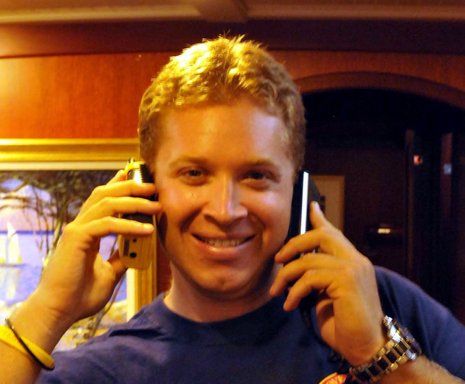
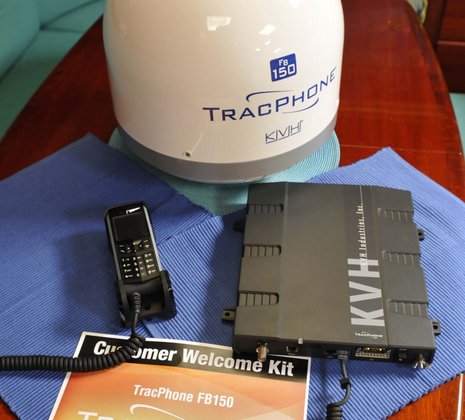
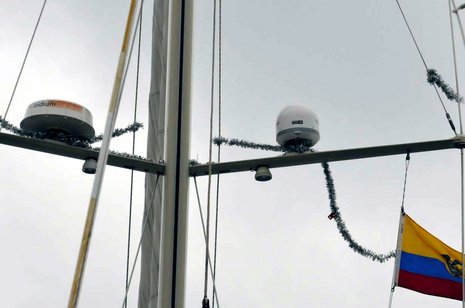
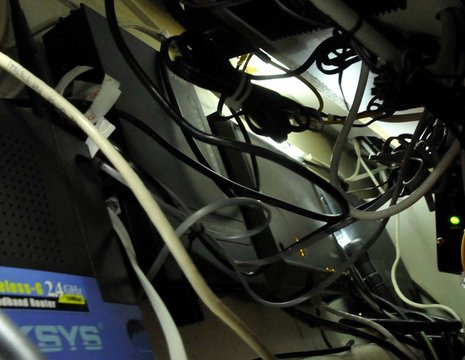
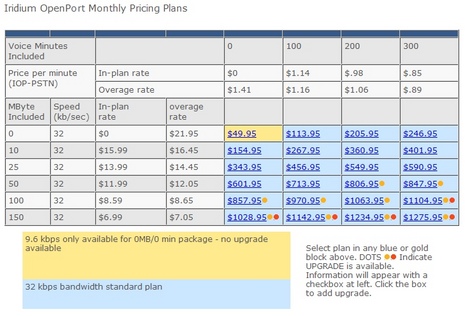
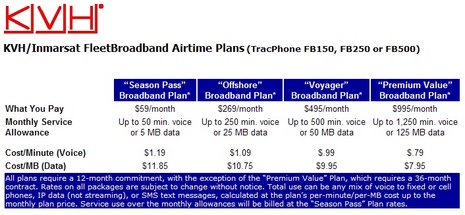
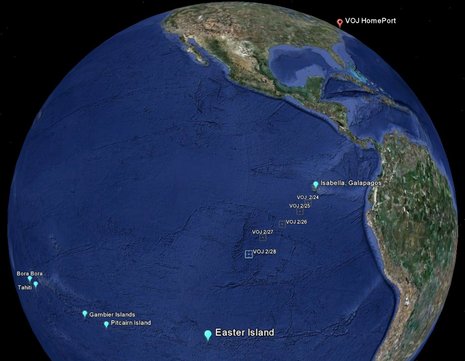
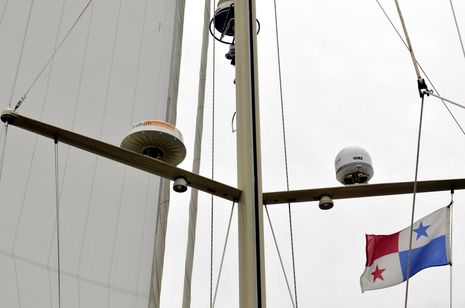
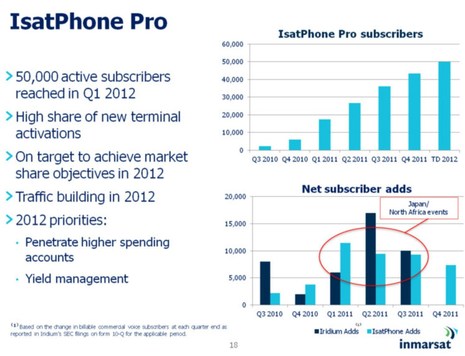
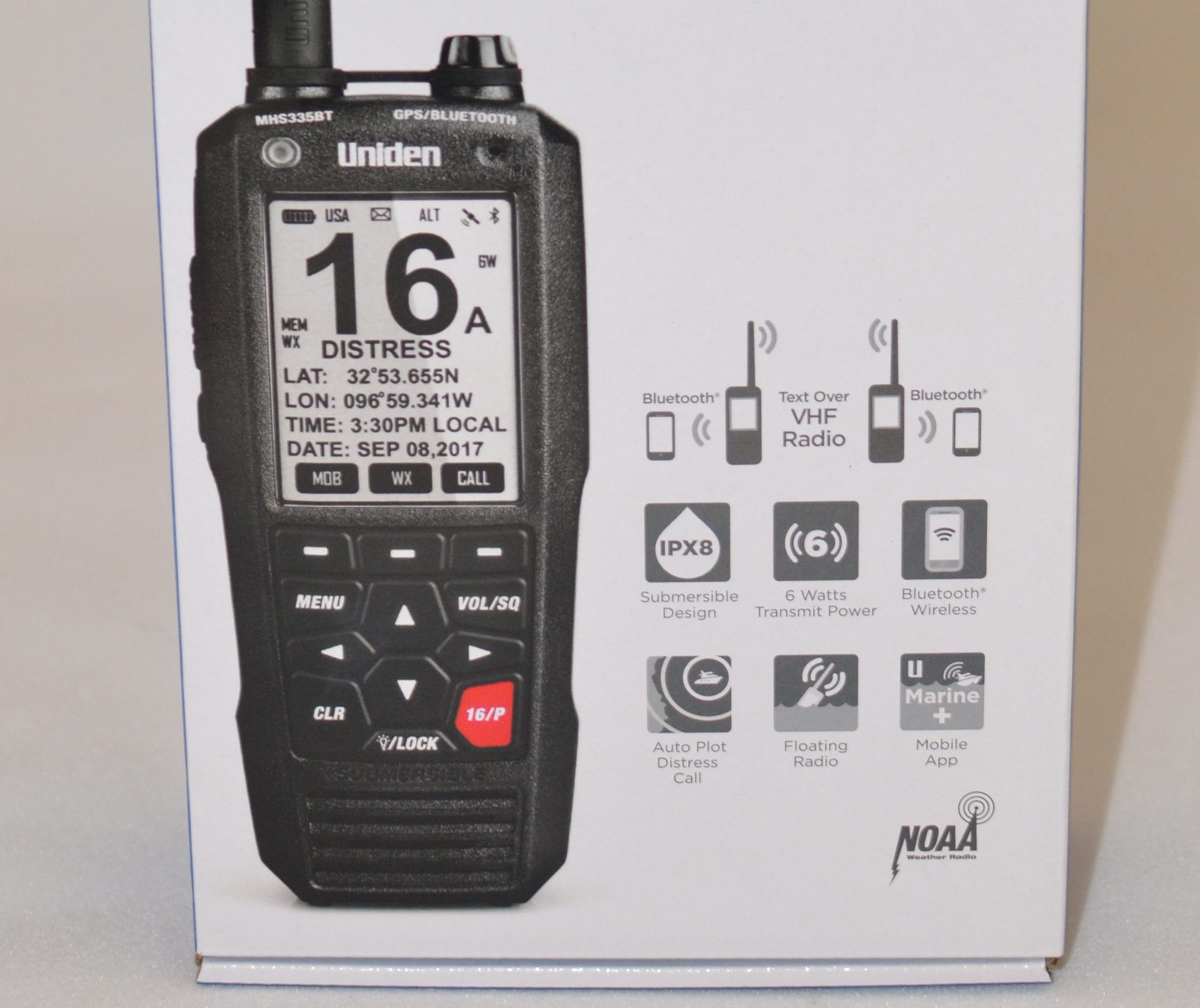








Awesome report.
1) How do the systems preform in rough water or at severe angles of heel?
2) Has either system ever failed to connect?
3) You mentioned that the Iridium voice disconnected every 5-7 minutes, does this happen during data transfer, and if it does, do you have to re-start your download and forfeit those expensive minutes?
My interest is in real world usage and cost. What applications does this hardware address and at what cost versus basic Iridium?
How much does SMS cost with both systems? Please include a good amount of detail on the SMS, that’s an important part IMO.
Gram, great report and keep the updates flowing! Good point about the missing nuts and bolts!
As posted in earlier threads, there is also the FB150 variant “Skipper 150”, which I represent.
Hardware cost is $1000 less and airtime rates are lower, too. See http://www.skippercommunication.com – It is not a pretty web site (new one in the works with lots more information) but it tells you what is most important and there is a comparison to T&T and KVH. Regarding SMS, we charge 55 US cents per message with max of 160 characters and you can append Lat/Lon, if you like. One thing about SMS you should know is, that SMS is mostly one-way communication because most telcos will not send to sat numbers!
I can comment once again I purchased a Skipper 150 from Ron. Start to finish I ordered and sent him the money on a Wednesday and had the delivery Saturday. I paid for expedited shipping. Being in the middle of a North Easter storm I simply placed the Radome on one of my cockpit deck boxes. I was up and running in minutes. I have since had the unit properly installed. Using a few speed test sites it performs as advertised. My experiance with the SMS to US cellphones is it is only one way even though my US cell phones are international call enabled. I can tell you during the height of the storm we lost our KVH M3 Direct TV but the INMARSAT signal was fine with little degredation. As mentioned earlier I was disappointed that the hardware was not included. mounting hardware is needed. Thats it for now.
Bill Lentz
Problem with providing installation\mounting hardware is that we do not know what kind of an installation it will be. While we could easily supply 6X M6 bolts, it begs the question, how long? I mounted my own antenna radome on specially fabricated S.S. arch on the stern of Bremer Speck and got away with bolts about 1.5 inches long. You may be needing 2, 3 or 4 inches. However, it is probably best to supply a set of bolts, anyway. AaronH asked about performance in rough water. I spent 48 hours in the midst of a Nor’Easter with 50 knots sutained winds and waves of 15-20 feet or so. Hard to judge at night. I never lost the satellite and maintained uninterrupted voice and data connections throughout this ordeal.
Skipper,
The solution that you are selling the Skipper 150, I have never heard of, I was wondering if there is a hardware failure who can fix it and also who can install it? I’m at the lauderdale show and deciding?
Thanks
Deciding
I made up an adapter plate out of starboard. The starboard was cut in a small circle to fit to my old KVH252 TracPhone’s pedestal. The Skipper 150 holes are smaller we used a supplied PDF templete to drill and counter sink the screws that hold the Skipper then used hardware to bolt the starboard to the mount. A single 1.5″ hole was drilled in the center for the N connector on the Skipper. I also weather proofed the N connector at the Skipper’s Radome. It looks very nice and is practical. I also used some 4200 to seal both sides of the starboard.
Bill Lentz
For still deciding, in a nutshell, Thrane&Thrane and Addvalue Singapore, were the 2 companies contracted by Inmarsat to develop the generically called FB150. T&T sells as Sailor 150, Addvalue sells as Skipper 150, KVH sells T&T as KVH FB150.
We maintain a service station in Ft. Lauderdale assuring prompt service and fast turnaround.
$13.50 p/mb or $7.95 p/mb (@ $995 p/month). Wow! That’s still a bit high, but I guess the costs of implementing & maintaining the Sat system is also incredibly high.
Don’t think I’d do much browser surfing @7.95 p/mb unless I’m blocking flash, scripts & images (stuff that makes web pages really bloated), would probably also used a proxy system to prevent repeated downloads.
Btw: Deltawave *used* to have a package @ $5.5k p/month which included 1041mb @ $5.28 p/mb.
Any word on how the two systems are behaving?
Thank you for excellent information. I’m planning to purchase either OP or FBB150 and it seeems to be very diifcult to get access to OP for testing.
My thoughts on your OpenPort problems:
5- 7 minutes call dropping freq. is a remarkable annoyance, worth of getting rid of.
It would match to inter-satellite handover freq.
You seem to have done very professional installation, surely you have your masthead VHF antenna and Inmarsat FBB150 antenna turned off during OP transmissions? Your mast will have an effect on signal stregth as it seems to be less than two feet away.
Idea for future tests:
Try with wireshark (i.e. Ethereal) and you can monitor your real throughut, loss and RTT easily. I would be very interested about these!
i bit geek proposal wold also be to see iridium monitoring sites from internet and try to see where satellites locate during these connection breaks (I have no idea if these sites really have valid info but would thought so).
Since there is only Ethernet connection to ADE, I assume that all calls from OP are Voip calls and in principle measurable also with wireshark.
Jussi, Gram wrote a follow up to this report in March, and by then the OpenPort call dropping issues had gone away:
https://panbo.com/archives/2010/03/iridium_openport_vs_kvh_fb150_testing_3_voj_in_the_pacific.html
Thanks Ben!
I found it, and wrote something about the power measurements.
I understand that you are sailing somewhere in FP. You have a lovely passage waiting for you…
BTW: surely you know but if not there is a good french weather service covering Marquesas to Tonga. http://www.meteo.pf/previsions.php?carte=preiso36